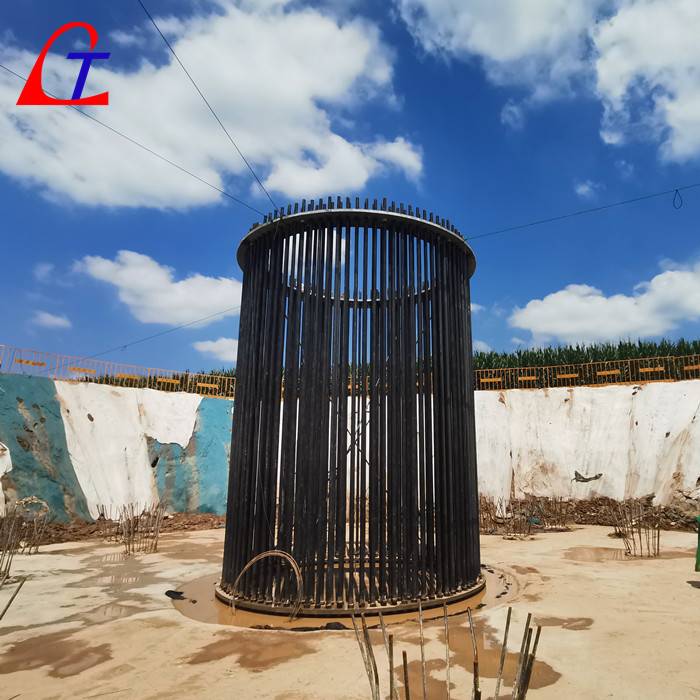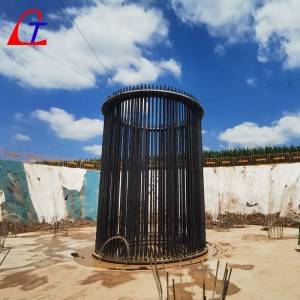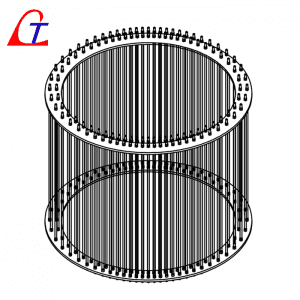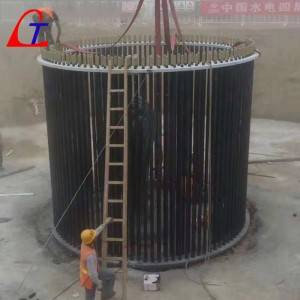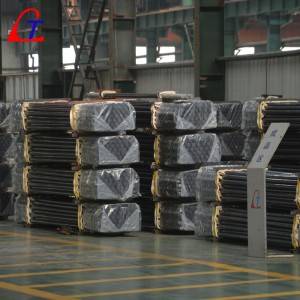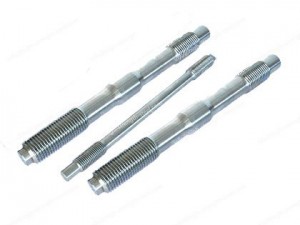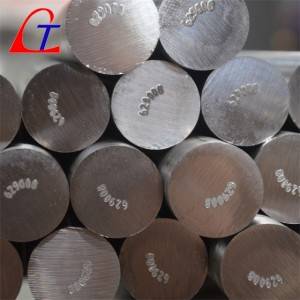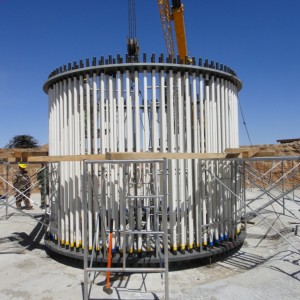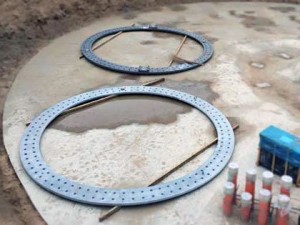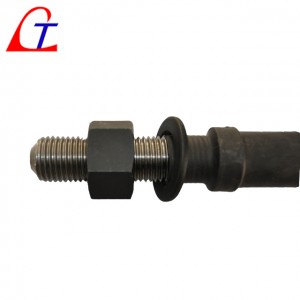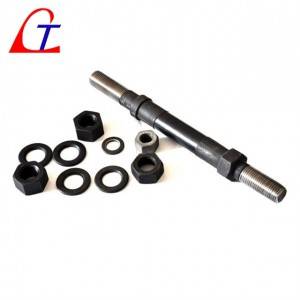Description
With increased demand for greater output from wind energy projects, the industry is increasingly looking to maximize output from each wind turbine. Over the years, wind power has become competitive with traditional forms of non-renewable energy because advancements in generator technology allow larger and heavier generators to produce a higher-megawatt output than ever before. These newer, advanced turbines are also carried on towers with higher hub heights to capture higher wind speeds. With this comes the requirement for tower anchor bolts to carry higher tensile load capacities.
| Anchor bolt Grade | Nut Grade | Washer | Size | Impact release | Length (mm) |
| 8.8 | 8 | 35-45 HRC | M20-M64 | 65 |
10000 MAX
|
|
9.8
|
9 | 55 | |||
| 10.9 | 10 | 50 | |||
| 12.9 | 12 | 40 |
| Grade | Rm/Mpa | Rp0.2/Mpa | A% | Z% | -40℃Akv2/J | Hardness |
| 10.9 | ≥1040 | ≥940 | ≥9 | ≥48 | ≥50 | HRC32-39 |
| 8.8 | ≥830 | ≥660 | ≥12 | ≥52 | ≥70 | HRC23-34 |
Design and installation
To safely carry larger turbines at higher hub heights, careful consideration must be given to the foundation design and system components. A proper geotechnical evaluation of the soils must occur after all of the structural loads carrying the tower and nacelle components are evaluated. With this information, the foundation designer is able to determine the width and depth of the concrete foundation.
A vital component to the foundation system is the tower anchor bolt. These anchor bolts are responsible for keeping the tower and nacelle in equilibrium. The anchor bolts are installed during the foundation forming process in a large ring pattern with a matching inner and outer circle of anchor bolts symmetrically around the foundation.
Typically, between 140 and 200 anchor bolts are in each foundation design. A thick steel embedment ring containing holes for the tower anchor bolts is placed near the bottom of the foundation pour, and a template ring – ostensibly, a thinner steel ring with matching holes – is placed at the top of the foundation pour. Each anchor bolt is fitted with PVC sleeves running between the steel rings so they are flush against each ring surface in order to keep the anchor bolts de-bonded during the foundation pouring operation.
A heavy pattern hex nut and washer are underneath the embedment ring and similarly placed on the tower base plate. (Prior to placing the tower base plate, the temporary template ring is removed after the concrete pour.) It should also be noted the tower base section is shimmed into position above the top of the pedestal foundation pour, and the voided area between is filled with a high-strength epoxy grout to complete the grout pad.
Once the grout pad is cured, all of the tower anchor bolts are pre-tensioned to a load specified by the foundation designer and locked off by torquing the top hex nuts to remove the stretch created. The pre-tensioning process is typically achieved by using small-diameter, compact, high-psi capacity calibrated tensioners. This elastic stretch created by tensioning under load is permanently transferred to the anchor bolt by torquing the nut prior to removing pressure from the tensioning jack.
After pre-tensioning the tower anchor bolts in a predetermined selected pattern across the foundation, the ring pattern of the anchor bolts is placed into compression. Therefore, the equilibrium is maintained as varying load cycles are continuously placed on the foundation. Designers specify an anchor bolt lock-off pre-tensioning load to be at a level where the maximum external design load that is placed on the foundation is never reached.
Pre-tensioning prevents the anchor bolts from stretching and relaxing, which can lead to long-term fatigue, and also mitigates spalling or cracking of the concrete from tensile stresses.
The normal practice is for the foundation designer to specify a lock-off load that takes into consideration in-service design loads and, in addition, losses such as natural relaxation loss in the steel (generally averages 2% max) and slight creep losses in the foundation itself under load. Creep refers to the slight movement over time to the concrete – and, to a lesser extent, the steel tower base as a result of being under the pre-tension load. Movement resulting from the so-called creep results in a loss of direct pre-tension load.
Anchor Bolt/ Anchor Cage For Wind Turbine Foundation
Our factory is a specialized manufacturer producing high strength bolts for Wind power generator, high strength bolts for nuclear power generator, high strength bolts for steel structure, cheese head studs for arc stud welding, High Strength Ring Bolts and special high strength fasteners. Also used for equipment for nuclear power plant, the boiler steel construction of power station, mechanical and electrical equipment, airport hangar, large span bridge, skyscraper, high speed train and the railway track switch
Packing
Chemical composition
|
Material
|
C | Si | Mn | P | S | Cr | Ni | Mo | Cu |
| 35CrMoA | 0.34-0.39 | 0.17-0.37 | 0.40-0.70 | 0.015max | 0.010max | 0.80-1.10 | 0.30max | 0.15-0.25 | 0.25max |
| 42CrMoA | 0.39-0.45 | 0.17-0.37 | 0.50-0.80 | 0.015max | 0.010max | 0.90-1.20 | 0.20max | 0.20-0.25 | 0.25max |
Production Line
Quality Control
Certificates
Achieving the ISO 9001:2008 Certification is just one example of our Products’ dedication to quality and continuous improvement. Each employee is responsible for understanding company expectations and adhering to the procedures of our Quality Management System.
Our Products ensures customers receive the material ordered with accurate supporting paperwork. Customers can count on proper documentation, on-time performance and effective follow-up.
Guarantee
We will continually improves and expands the quantity and quality of our product which exactly meet customers need. We do whatever it takes to make our clients happy.
We will develop long-term commercial and technical partnerships with customers. And we are committed to continual quality improvement of all internal processes. The success of our quality program is affirmed by our strong customer retention rate.
Contact [email protected] for a free quote, we will reply within one working day.






